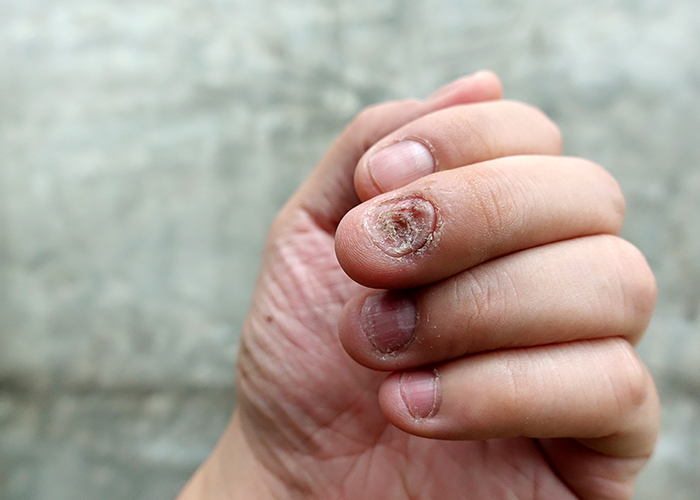
Fungal infections of the skin are caused mainly by two groups of fungi – namely, dermatophytes, such as Trychophyton rubrum, which invade keratin (e.g. hair, skin and nail tissue) and yeasts, such as Candida albicans, which opportunistically infect warm, moist sites.
Superficial dermatophyte infections (ringworm, athlete’s foot, groin infection) can be treated with over-the-counter antifungal agents. Dermatophyte infections of the scalp and hands require systemic treatment, as do widespread infections of the trunk. Nail infections affecting a small number of nails may respond to topical treatment but extensive nail infection requires systemic treatment.
Opportunistic yeast (Candida species) infections represent a smaller group but can be important in diabetic and immunocompromised patients. Pityriasis versicolor is a harmless, but often distressing condition, that is easily treated with OTC products. Seborrhoeic dermatitis is a common condition with a wide range of severity and extent. It is included here because mild, limited disease responds to OTC treatments.
The effectiveness of treatment depends on good adherence and persistence in addition to other measures to minimise the growth of fungal organisms and prevent reinfection. This means that there is much for pharmacy teams to do in terms of educating and encouraging patients to get the best out of their treatments.
